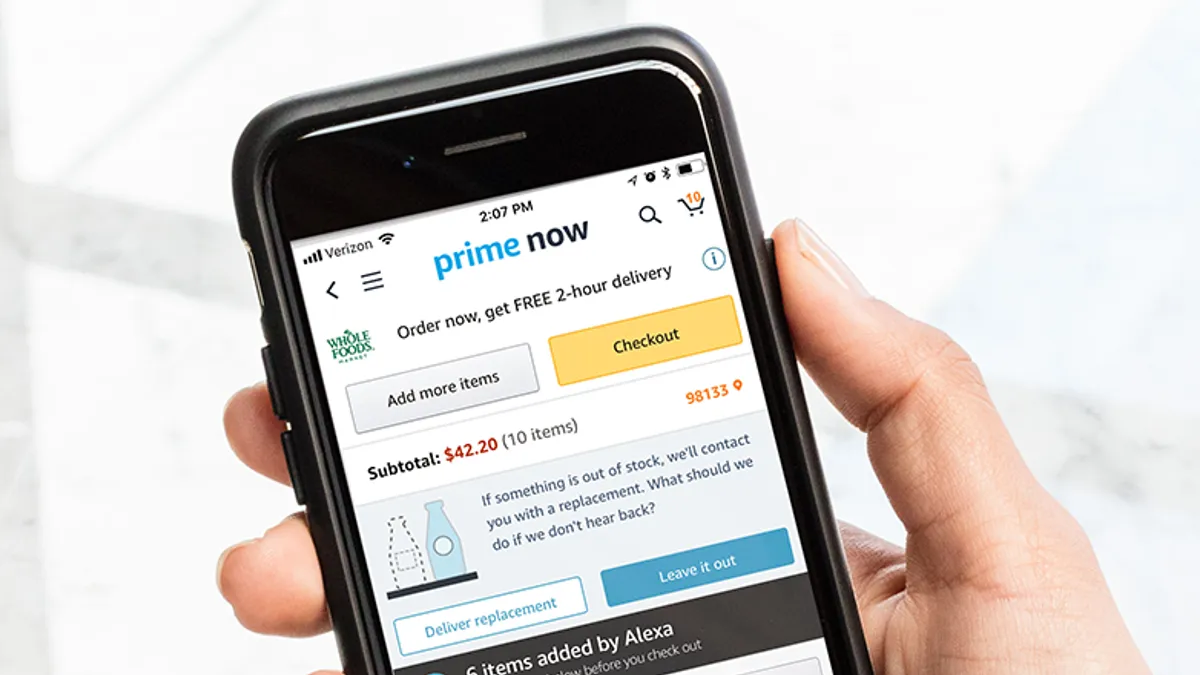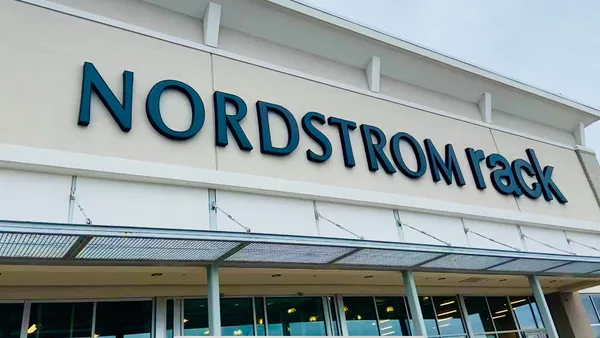Dive Brief:
-
A mobile pop-up ad experiment has come and gone at Amazon but it's creating a stir nevertheless: The e-commerce giant recently experimented with mobile windows offering its private label products when customers looked at the product pages for certain, similar items, the Wall Street Journal reports.
-
The Journal detailed how, if a shopper took to Amazon's app to find batteries, for example, a sponsored listing would appear for the Energizer brand. When the shopper clicked on the Energizer listing, a window detailing the e-retailer's AmazonBasics alternative would pop up and would have to be dismissed by the shopper in order to complete the purchase, according to the report.
-
An Amazon spokesperson in an email to Retail Dive took issue with the characterization of the pop-ups as ads and wrote that, "this was a small test; the similar, lower-priced product options shown to customers were from a range of relevant brands on our website; and the similar product options were not ads." The feature was developed by Amazon's retail team rather than its advertising team, according to the Journal's report.
Dive Insight:
Whatever Amazon wants to call a pop-up that displays product details as well as a purchase button, the short-lived experiment goes beyond the kind of side-by-side merchandising that has been the hallmark of "generic" or private label sales for eons, according to Melissa Burdick, president of e-commerce technology and services agency Pacvue, who previousy worked to build Amazon's consumer packaged goods business launch and devise its early sales strategy.
After all, private label goods stand next to name goods on store shelves all the time. "Driving customers to a lower-priced private label option while physically next to a well-known brand is not new – this has been going on in brick & mortar since the introduction of private label and is how a lot of brands tend to respond when I ask them about their thoughts on Amazon private label efforts," she said in an email to Retail Dive.
But she added that there are two issues with Amazon's most recent efforts, starting with interrupting the buy box option and requiring dismissal of the pop-up in order to complete a purchase. "Actually removing the ability to buy until you do an action to me seems like it crosses an undefined line."
The practice would also have implications for a key aspect of Amazon's e-commerce business scheme: advertising. The test comes at a time when those services represent a fast-growing source of revenue for the company. In the fourth quarter, Amazon's net sales rose 20% to $72.4 billion, and services sales rises overshadowed product net sales growth. Subscriptions rose 25% to $3.96 billion and "other" (mostly advertising, according to executives) rose 95% to $3.39 billion as AWS cloud computing sales rose 45% to $7.43 billion.
That's the backup to Burdick's second issue of concern. "[A] lot of brands are spending their brand advertising dollars to drive traffic directly to a detail page (both internally within Amazon and externally from social media such as Instagram or Twitter) where Amazon then has a placement the brand doesn't have access to and may trade that customer to a choice other than their brand," she said. "Since the customer can still buy the product without interference, it's less offensive. However, as a brand, I would certainly want to measure how Amazon's private label placements affect my advertising ROI."













